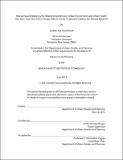| dc.contributor.advisor | Alan Berger. | en_US |
| dc.contributor.author | Drummond, Jocelyn Pak | en_US |
| dc.contributor.other | Massachusetts Institute of Technology. Department of Urban Studies and Planning. | en_US |
| dc.coverage.spatial | n-us-ny | en_US |
| dc.date.accessioned | 2013-10-24T18:11:02Z | |
| dc.date.available | 2013-10-24T18:11:02Z | |
| dc.date.copyright | 2013 | en_US |
| dc.date.issued | 2013 | en_US |
| dc.identifier.uri | http://hdl.handle.net/1721.1/81738 | |
| dc.description | Thesis (M.C.P.)--Massachusetts Institute of Technology, Dept. of Urban Studies and Planning, 2013. | en_US |
| dc.description | This electronic version was submitted by the student author. The certified thesis is available in the Institute Archives and Special Collections. | en_US |
| dc.description | Cataloged from student-submitted PDF version of thesis. Pages [123] and [124] blank. | en_US |
| dc.description | Includes bibliographical references (p. 115-122). | en_US |
| dc.description.abstract | The fields of urban planning and public health both emerged in the 19th century and were united in an effort to address poor health conditions that were linked to the urban environment of cities. By the end of the 20th century, planning and public health had drifted apart to a point where they were completely disparate in mission and action. Over the last two decades, public health professionals, planners, and urban designers have begun to reconsider the connections that once united them. !ere is much that is still unproven about the relationships between the physical, natural, and social environments of cities and urban health, but national and local governments and research groups have designed ways to measure the urban environment and its effect on health. New York City is a leader in interagency collaboration and citywide initiatives to address urban health issues through planning policy and urban design, specifically the Active Design Guidelines. At the same time, the obesity epidemic is on the rise in most New York City neighborhoods and the disparities among them are great. This thesis will explore mapping as a tool for better understanding the spatial relationships between urban environment and urban health and informing policy and design decisions about the implementation of active design in New York. While it is currently understood that the social environment has the largest impact on urban health, the results of this thesis suggest that the physical and natural environments are also important contributors to obesity in New York City. This thesis provides recommendations for intervention in all three aspects of the urban environment in New York as a model of healthful planning and urban design. The goal of this research is to aid in the reconnection of urban planning and health in order to address the health epidemics and disparities of the 21st century. | en_US |
| dc.description.statementofresponsibility | by Jocelyn Pak Drummond. | en_US |
| dc.format.extent | 122, [2] p. | en_US |
| dc.language.iso | eng | en_US |
| dc.publisher | Massachusetts Institute of Technology | en_US |
| dc.rights | M.I.T. theses are protected by
copyright. They may be viewed from this source for any purpose, but
reproduction or distribution in any format is prohibited without written
permission. See provided URL for inquiries about permission. | en_US |
| dc.rights.uri | http://dspace.mit.edu/handle/1721.1/7582 | en_US |
| dc.subject | Urban Studies and Planning. | en_US |
| dc.title | Measuring and mapping the relationships between urban environment and urban health : how New York City's Active Design policies can be targeted to address the obesity epidemic | en_US |
| dc.title.alternative | How New York City's Active Design policies can be targeted to address the obesity epidemic | en_US |
| dc.type | Thesis | en_US |
| dc.description.degree | M.C.P. | en_US |
| dc.contributor.department | Massachusetts Institute of Technology. Department of Urban Studies and Planning | |
| dc.identifier.oclc | 859205581 | en_US |
